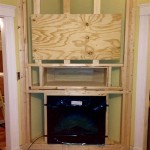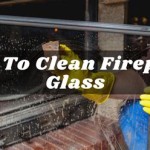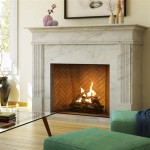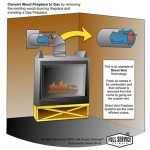Wall Mounted Fireplaces: A Modern Heating and Aesthetic Solution
Wall mounted fireplaces have emerged as a popular choice for homeowners seeking to combine functionality with contemporary design. These fireplaces offer an efficient heating solution while serving as an eye-catching focal point in any room. This article will explore the various aspects of wall mounted fireplaces, including their types, benefits, installation considerations, and maintenance requirements.
The appeal of wall mounted fireplaces lies in their versatility and ability to seamlessly integrate into diverse interior styles. Unlike traditional fireplaces that require extensive construction and a dedicated chimney, wall mounted models offer a simpler, more adaptable installation process. They can be placed in virtually any room with sufficient wall space, making them suitable for apartments, condominiums, and houses.
Types of Wall Mounted Fireplaces
Wall mounted fireplaces are available in a variety of types, each with its own distinct features and fuel source. The most common types include electric, gas, and ethanol fireplaces.
Electric Fireplaces: Electric fireplaces are perhaps the most user-friendly and versatile option. They operate by using electricity to generate heat, often simulating the appearance of real flames through LED technology or holographic projections. These fireplaces typically feature adjustable heat settings and flame intensity, allowing users to customize the ambiance and temperature to their preference. Electric fireplaces do not produce any emissions or require venting, making them a safe and environmentally friendly choice. Installation is relatively simple, typically involving mounting the unit to the wall and plugging it into a standard electrical outlet.
Gas Fireplaces: Gas fireplaces operate using natural gas or propane as their fuel source. These fireplaces produce real flames, providing a more authentic fireplace experience. They offer a higher heat output compared to electric models, making them suitable for heating larger spaces. However, gas fireplaces require a gas line connection and venting to the outside, which necessitates professional installation. While gas fireplaces offer a realistic flame appearance, they also produce emissions, requiring careful consideration of ventilation requirements and safety measures.
Ethanol Fireplaces: Ethanol fireplaces, also known as bio ethanol fireplaces, burn liquid ethanol fuel to create real flames. Ethanol is a renewable fuel source produced from agricultural byproducts, making these fireplaces an environmentally conscious option. Ethanol fireplaces do not require venting, as the combustion process produces primarily carbon dioxide and water vapor. However, it's crucial to utilize high-quality ethanol fuel specifically designed for fireplaces to ensure safe and clean burning. Ethanol fireplaces often feature a modern and minimalist design, adding a sleek aesthetic to any room. Regular refueling is necessary, and it's important to follow the manufacturer's instructions carefully to avoid spills or accidents.
Beyond these primary categories, further variations exist within each type. For instance, electric fireplaces may offer features such as built-in thermostats, remote controls, and timers, enhancing user convenience and control. Gas fireplaces may incorporate features like realistic log sets, ember beds, and adjustable flame heights to mimic the appearance of a traditional wood-burning fireplace. Ethanol fireplaces can vary in design, ranging from sleek, minimalist models to more elaborate, decorative units.
The selection of a particular type of wall mounted fireplace depends on a variety of factors, including budget, desired heat output, aesthetic preferences, installation requirements, and environmental considerations. Electric fireplaces offer the greatest ease of installation and operation, while gas fireplaces provide the most realistic flame appearance and highest heat output. Ethanol fireplaces offer a balance of aesthetics and environmental friendliness, but require regular refueling and careful handling of the ethanol fuel.
Benefits of Wall Mounted Fireplaces
Wall mounted fireplaces offer several advantages over traditional fireplaces and other heating alternatives. These benefits encompass factors such as space saving, aesthetic appeal, ease of installation, and energy efficiency.
Space Saving: One of the most compelling benefits of wall mounted fireplaces is their space-saving design. Unlike traditional fireplaces that occupy a significant portion of floor space, wall mounted models are designed to be installed directly on the wall, freeing up valuable floor area. This is particularly advantageous in smaller rooms or apartments where space is limited. By eliminating the need for a hearth or firebox, wall mounted fireplaces create a cleaner, more streamlined look, enhancing the overall sense of spaciousness.
Aesthetic Appeal: Wall mounted fireplaces are renowned for their contemporary and stylish designs. They can serve as a striking focal point in any room, adding a touch of elegance and sophistication. These fireplaces are available in a wide range of styles, finishes, and sizes, allowing homeowners to select a model that perfectly complements their existing décor. Whether the desired aesthetic is modern minimalist, rustic chic, or classic contemporary, there is a wall mounted fireplace to suit virtually any taste. The realistic flame effects offered by many models further enhance the aesthetic appeal, creating a warm and inviting ambiance.
Ease of Installation: Compared to traditional fireplaces that require extensive construction and professional installation, wall mounted fireplaces are generally easier to install. Electric fireplaces are the simplest to install, often requiring only the mounting of the unit to the wall and plugging it into a standard electrical outlet. Gas fireplaces require a gas line connection and venting, necessitating professional installation to ensure safety and compliance with building codes. Ethanol fireplaces are relatively easy to install, requiring only the mounting of the unit to the wall and the addition of ethanol fuel. The simplified installation process makes wall mounted fireplaces an attractive option for homeowners who want to enjoy the warmth and ambiance of a fireplace without the hassle and expense of a major renovation.
Energy Efficiency: Wall mounted fireplaces, particularly electric and ethanol models, can be energy efficient heating solutions. Electric fireplaces utilize electricity to generate heat, allowing users to control the temperature and heat output precisely. Many models feature built-in thermostats and timers, enabling users to program the fireplace to turn on and off automatically, reducing energy consumption. Ethanol fireplaces burn renewable ethanol fuel, which is produced from agricultural byproducts, making them a more environmentally friendly option compared to gas fireplaces. By providing supplemental heating to a specific area, wall mounted fireplaces can reduce the reliance on central heating systems, resulting in lower energy bills.
In addition to these primary benefits, wall mounted fireplaces offer other advantages such as ease of maintenance, safety features, and versatility. Electric and ethanol fireplaces require minimal maintenance, typically involving only occasional cleaning of the unit. Many models incorporate safety features such as overheat protection and automatic shut-off mechanisms, reducing the risk of accidents. Wall mounted fireplaces can be installed in various rooms throughout the house, including living rooms, bedrooms, and even bathrooms, providing a flexible heating and aesthetic solution.
Installation and Maintenance Considerations
Proper installation and maintenance are crucial for ensuring the safe and efficient operation of a wall mounted fireplace. Adhering to the manufacturer's instructions and following relevant safety guidelines are essential for both the installation process and ongoing maintenance.
Installation Considerations: Before installing a wall mounted fireplace, it is important to carefully assess the structural integrity of the wall. Ensure that the wall is capable of supporting the weight of the fireplace unit. For electric fireplaces, confirm that a suitable electrical outlet is readily available. For gas fireplaces, a professional gas line connection and venting system are required. It is crucial to consult with a qualified contractor or technician to ensure that all installation requirements are met and that the fireplace is installed in accordance with local building codes and safety regulations. Proper venting is essential for gas fireplaces to prevent the buildup of harmful gases such as carbon monoxide. For ethanol fireplaces, ensure adequate ventilation in the room to prevent the accumulation of carbon dioxide.
Maintenance Requirements: The maintenance requirements for wall mounted fireplaces vary depending on the type of fireplace. Electric fireplaces generally require minimal maintenance, typically only involving occasional cleaning of the unit. Dust and debris can be removed using a soft cloth or vacuum cleaner. Gas fireplaces require regular inspection and maintenance by a qualified technician. This includes checking the gas line connections, venting system, and burner assembly. Cleaning the gas fireplace regularly can help prevent buildup and ensure efficient operation. Ethanol fireplaces require regular refueling with high-quality ethanol fuel. It is important to follow the manufacturer's instructions for refueling and to avoid overfilling the fuel reservoir. Spills should be cleaned immediately to prevent fire hazards.
Safety Precautions: Safety is paramount when operating a wall mounted fireplace. Never leave a fireplace unattended while it is in operation. Keep flammable materials away from the fireplace to prevent fire hazards. Supervise children and pets closely when the fireplace is in use. Install smoke detectors and carbon monoxide detectors in the room where the fireplace is located. Regularly test the detectors to ensure they are functioning properly. In the event of a fire or gas leak, immediately evacuate the area and contact the appropriate emergency services.
By following these installation and maintenance considerations, homeowners can ensure the safe and efficient operation of their wall mounted fireplace for years to come. Regular maintenance and adherence to safety guidelines will help prevent problems and ensure that the fireplace continues to provide warmth and ambiance safely and reliably.

60 Inch Electric Fireplace 750 1500w Recessed Wall Mounted Remote Oneinmil

Modern Flames Lpm 4416 Wmc Landscape Pro Multi 44 Inch Three Sided Electric Fireplace With Wall

Recessed Or Wall Mount Electric Fireplace Installations Explained Touchstone Home S Inc

Livingandhome Black Wall Mounted Electric Fire Fireplace Temperature Adjustable 50 Inch Diy At B Q

Katell Loreto Italia Wall Mounted Electric Fireplace Bonfire Fireplaces

Modern Flames Landscape Pro 70 3 Sided Electric Fireplace Wall Mount Studio Suite Mantel In White Wmc56lpmrtf Fireplaces Depot

Classic Flame Helen 48 In Wall Mount Electric Fireplace Black 48hf320fgt The Home Depot

The Ins And Outs Of Wall Mounted Fireplaces 5 Things To Consider Stylish

Clihome Flame 50 In Black Wall Mounted Thermostat Electric Fireplace With Timer Control Vl Wm50 The Home Depot

Our Guide To Wall Mounted Fires Installation Direct Fireplaces
Related Posts








